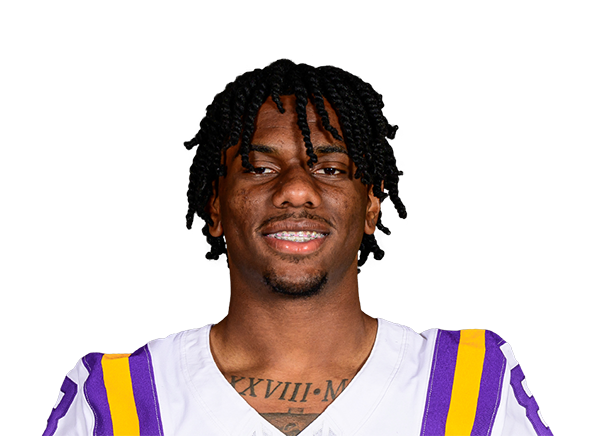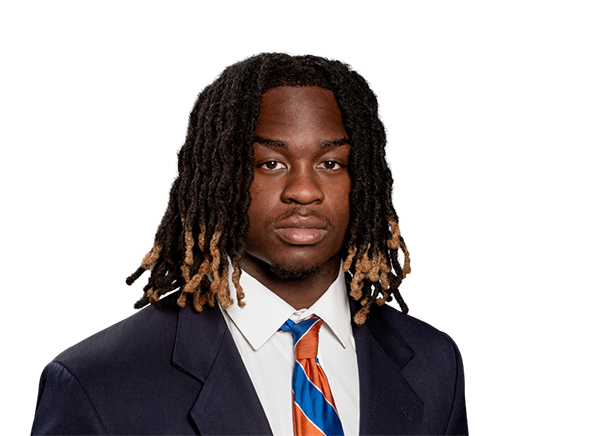Welcome back to the fourth season of the Fantasy Z-Score! A statistical blend of what metrics matter most in predicting future fantasy points.
My hope is that this model is able to provide you with actionable insight into each prospect’s profile, their pros and cons, and why it matters. The particular beauty of the Z-Score is in its transparency in process, categorical grades, and final overall projection of PPG to satisfy those who are thirsting for a quick summary of analysis, deep explanatory insight, and everything in between. For detailed explanations on the process and categories used, please scroll down to the “Method behind the Madness” section.
2022 Dynasty RB Rankings and Predictions
As noted in the WR article, this class is one of the lower graded classes overall in recent memory. On the bright side, we have a very clear top tier of two RBs, but after that it is very much a pick your flavor type of grouping.
Below you will find each player’s Fantasy Z-Score rating, a snapshot of their profile grades, and their current consensus rookie ADP. A full summary of the 2022 class all in one chart is included here for your viewing pleasure:
Tier 1
1. Breece Hall (NYJ)
Projected PPG: 14.5
Consensus Rookie ADP: RB1
Hall has excellent athleticism shown by his top notch combine scores – most notably led by his 117 SpeedScore. He also had the most scrimmage yards per game (148 ypg) in the class his final season, which showcases he can very clearly translate his talents on the field.
Landing spot is awfully critical for RBs, regardless of the popular saying that “talent wins out”. We saw first hand how this affected guys like Javonte competing with Melvin Gordon, and Michael Carter landing in a wide open backfield. Hall lands with the same team as Carter but with much higher invested capital and a significantly better profile. This all simply further entrenches the fact that he should be the RB1 of the class you can take with confidence.
2. Kenneth Walker (SEA)
Projected PPG: 13.2
Consensus Rookie ADP: RB2
Next comes the player that – in my opinion – is the best pure rusher in the class. This rushing behemoth boasted a 30% broken tackle rate on his way to this group’s highest rushing yards per game. He tested a shade less athletic than Hall yet still was quite high in his grading. Where he gets dinged; however, is the near complete absence of receiving yards. While a good coach will get the ball to his hands by any means necessary, we don’t want him pigeon-holed to a Derrick Henry or Nick Chubb profile where he needs to be the best runner in the league to hit as a top-end dynasty asset; albeit they are actually beautiful player comps for him.
In the last 5 years, these RB prospects all had the following:
— David Zäch (@DavidZach16) April 7, 2022
– SpeedScore > 103
– Yards After Contact > 3.6 per carry
– Broken Tackle Rate > 30%
– Expected RND 1-2 draft capital
Dalvin Cook, Nick Chubb, Rashaad Penny…. and Kenneth Walker
Beautifully angry runners
Landing in Seattle is a double-edged sword. One the one hand, Carroll absolutely loves running the ball regardless of game script. On the other hand, Penny arguably was the best RB in the league during the second half of last season. I’m looking at 2023 and beyond for Walker and his full potential.
Another bright spot in Walker’s profile is his Yards Created profile, which has also shown stickiness in predicting fantasy success. Lots of things going his way, yet some notable hurdles in competition and receiving work.
Kenneth Walker is the epitome of a Yards Created standout.
— Graham Barfield (@GrahamBarfield) March 29, 2022
Walker's YC per carry (5.86) is 91st percentile and puts him among some amazing prospects (Zeke – 94th, Fournette – 89th, Kamara – 85th).
Think he was a fluid pass catcher on limited reps, too.
He's RB1 over Hall.
Tier 2
3. James Cook (BUF)
Projected PPG: 10.3
Consensus Rookie ADP: RB3
While everyone loves to mention how he is Dalvin Cook’s little brother, their profiles aren’t exactly familiar to each other. While his production and film grades were okay, he is a smaller back who tested poorly in the athletic department. His teammates all represent similarly average profiles in Singletary, Moss, and Duke. Predicting how this committee will be split is anyone’s guess.
Buffalo brass has mentioned repeatedly how they envision him as the pass-catching back in the offense after missing out on signing JD McKissic this offseason. This is likely a good thing, because targets and receptions are far more valuable than carries, and is a strength of Cook’s profile. While a lot of fantasy managers who want a RB will reach for him in the mid-late 1st, you will likely be paying a premium when compared to his profile that will likely be better spent elsewhere if you can afford to do so.
4. Rachaad White (TB)
Projected PPG: 9.5
Consensus Rookie ADP: RB5
White is a very interesting case, and likely has the most upside of anyone not named Hall or Walker. His career being at a small school in Arizona State knocks his profile down heavily, and it’s easy to imagine him scoring much higher had he transferred to a bigger school. Regardless, he still got some decent draft capital with the Bucs, but gets stuck being Lombardi Lenny for at least the 2022 season.
The film grades were notably lower on him than most 2nd/3rd round picks, which is a notable flag in itself. His credibility as a workhorse and athleticism are his most appealing traits, but once again we are looking more towards 2023 or an injury to Fournette before he becomes very meaningful.
Tier 3 – with spark notes
6. Tyler Allgeier (ATL)
- Gorgeous landing spot with Falcons, only Cordarelle and Damien as competition
- Productive profile at a small school
- Good tackle breaking ability, but poor athleticism otherwise
7. Tyler Badie (BAL)
- Could see instant work pending the health/recovery of Dobbins and Edwards
- Another relatively productive profile at a small school
- Ceiling is likely as a RB2 on a team
8. Kyren Williams (LAR)
- Was the focal point of Notre Dame’s offense, impressive resume
- Absolute abysmal testing at the combine combined with his small size
9. Ty Davis-Price (SF)
- Niners trying to set the record for the amount of drafted RBs in late rounds but any RB can make it there if Shanahan likes them
- Extremely average profile everywhere else
Honorable Mentions:
12. Dameon Pierce
- Best possible landing spot
- Horrendous profile everywhere else
Most people are seeing Dameon Pierce with the best RB landing spot possible, and drafting accordingly.
— David Zäch (@DavidZach16) May 3, 2022
I'm seeing a horrendous profile, completely bailed out by a great landing spot.
Feels like nothing more than a one more rental at best. pic.twitter.com/fF24ntkqZQ
13. Isaiah Spiller (LAC)
- A pre-draft darling with a fools gold analytic profile
- Above average film grades
- Pre-draft take lock will keep his ADP price way overvalued
Isaiah Spiller’s rookie RB3 rank makes very little sense to me.
— David Zäch (@DavidZach16) March 11, 2022
Not very good production, not very good athleticism, below average film grade for top-100 drafted RBs.
Smells like fantasy regret through and through in the first round of rookie drafts.
The remaining backs can be found in the overall chart listed above, and their projections can give you an idea of what to expect.
Method behind the Madness
The Z-Score always aims to use the best of the best as it pertains to metrics, constantly trying to identify any new methods that can improve its predictability. I run a correlation to NFL PPG every off-season to make sure the metrics are staying relevant or being eliminated from the equations.
In the past few years however, the RB Z-Score has had very few blemishes or misses. As a result, very few changes have been made to this year’s model. The most important one being the Film Grade being expanding from just Lance Zierlein grades from NFL dot com, to be a collective film grade with DynastyNerds Nerd Score and others included.
Below you will find each category, followed by a short explanation of why they are used.
Draft Capital
- By pick placement
Lack of Backfield Fantasy Competition (Landing Spot)
- How many PPG are being scored by existing team RBs?
- Measures short-term opportunity at time of publishing
- Weaker competition translates into more touches for incoming rookies
Athleticism Score
- Average of Combine Metrics
- Harvard Combine Metric
- MLR of recent combine results to NFL PPG
- College ability as a dual-threat in rushing and receiving
- Broken Tackle Percentage
Developed a new score for Athleticism for Rookie RBs…. turns out that its starting rival Draft Capital
— David Zäch (@DavidZach16) March 5, 2020
R^2:
Draft Capital – 0.34
Athleticism Score – 0.33
This score is made using 3 categories:
– Harvard Combine Metric
– Broken Tackle %
– Weighted Rush/Rec Role
(1/2) pic.twitter.com/2l0yEM6n78
Film Grade (aggregated from three film sources)
- Correlated historical film grades from 3 sources, including DynastyNerds Nerd Score, into expected fantasy points per game.
College Production Adjusted For Competition – Final Season
- Fantasy Points Per Game
- Team SRS (Simple Rating System)
- Team SOS (Strength Of Schedule)
- Receiving Yards Per Game
Each final letter grade is representative of what echelon of PPG that player falls into. (E.g. a 95% or better Athleticism Score as an A+). Please follow the twitter links above for more detailed explanations of each category.
NOTE: Many of these sections have not changed from previous year articles as their effectiveness remains unchanged and strong.
Breaking down each category, we can understand their usefulness. Draft capital is self-explanatory. The higher the selection, the better the player likely is and the more investment from the team to ensure they succeed.
Next is lack of fantasy competition – aka immediate opportunity available. It can show us who has an immediate chance for success their rookie year and early in their career. A team without a clear-cut leader is more likely to give opportunity to their brand new rookie.
Athleticism Score is what I defined as football athleticism as it relates to fantasy production. This consists of the Harvard Combine Metric and MLR of combine data, broken tackle percentage (courtesy of Sports Info Solutions), and their ability to work in both the rushing and receiving game in college as a dual-threat. All of these correlate strongly to fantasy and as a whole is toe-to-toe with draft capital for relevance.
Film grades are one of the new additions this year. Film analysts from NFL dot com, DynastyNerds, and others have shown that their work is becoming as reliable as draft capital as the years go by. The film grade in the Z-Score is a unique weighted blend of these grades so as to not become pigeon-holed into one single group’s way of seeing a player’s potential on film. Sure enough, the combination of all three has shown stronger predictive power than any one by itself. This adds confidence to the metric knowing it is only included the best, by balancing each other out when needed, and amplifying it when all align to see the same result.
College Production Adjusted For Competition was an idea first brought to my attention and pioneered by Underdog analyst Hayden Winks to adjust production for how strong a team was and how strong the competition they faced was. I used a multiple linear regression model involving the four variables I found to carry the highest significance (low p-values) to fantasy which consisted of college FPPG, receiving yards per game, and SportsReference metrics SRS (Simple Rating System) and SOS (Strength of Schedule). You can find Hayden on twitter @HaydenWinks for some great analytic threads on the incoming rookies and more.
What makes all of the aforementioned stats important enough to include? They all have correlated strongly to PPG over the last seven years. Draft capital itself has a historical R-squared of 0.40 to three-year PPG in my database. The Fantasy Z-score sits at 0.58; a massive improvement.
Last year’s model was borderline perfect, especially when compared against ADP at the time. You can clearly see the advantage this process gives us with proven results.
I hope this breakdown was helpful for you to find the stats that matter most when researching your rookie running backs for the upcoming season.
Thanks for reading and stay golden! If you like what you learned, follow me @DavidZach16 for more interesting stats and tidbits throughout the year.






















